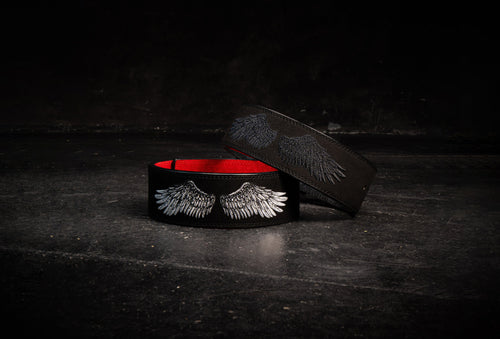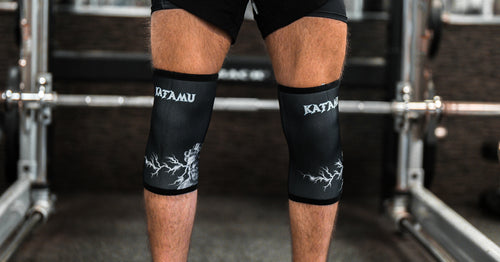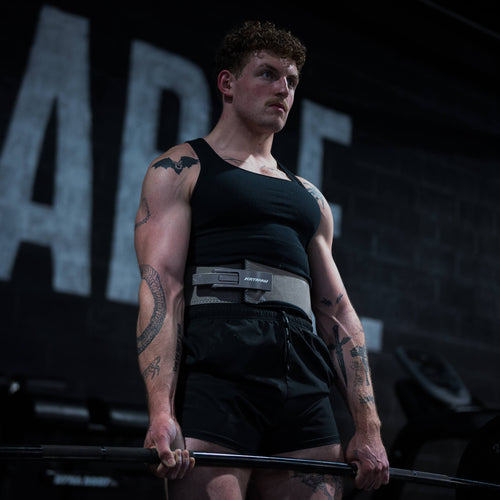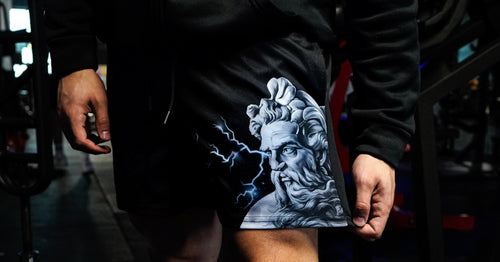Are you maximizing your lifts, or is your gym belt holding you back? In 2025, proper support and injury prevention are more critical than ever for lifters at every level. This guide will help you master the art of choosing and using a gym belt for optimal support and performance. You’ll learn about the science behind gym belts, the latest types and materials, how to select the perfect fit, best practices for wearing and maintaining your belt, plus expert strategies to elevate your training. It’s time to upgrade your lifting gear and unlock your true strength.
Understanding Gym Belts: Purpose and Benefits
Wearing a gym belt is one of the most common sights in any weight room. But what exactly makes a gym belt so valuable, and how does it work to protect and support you during training?
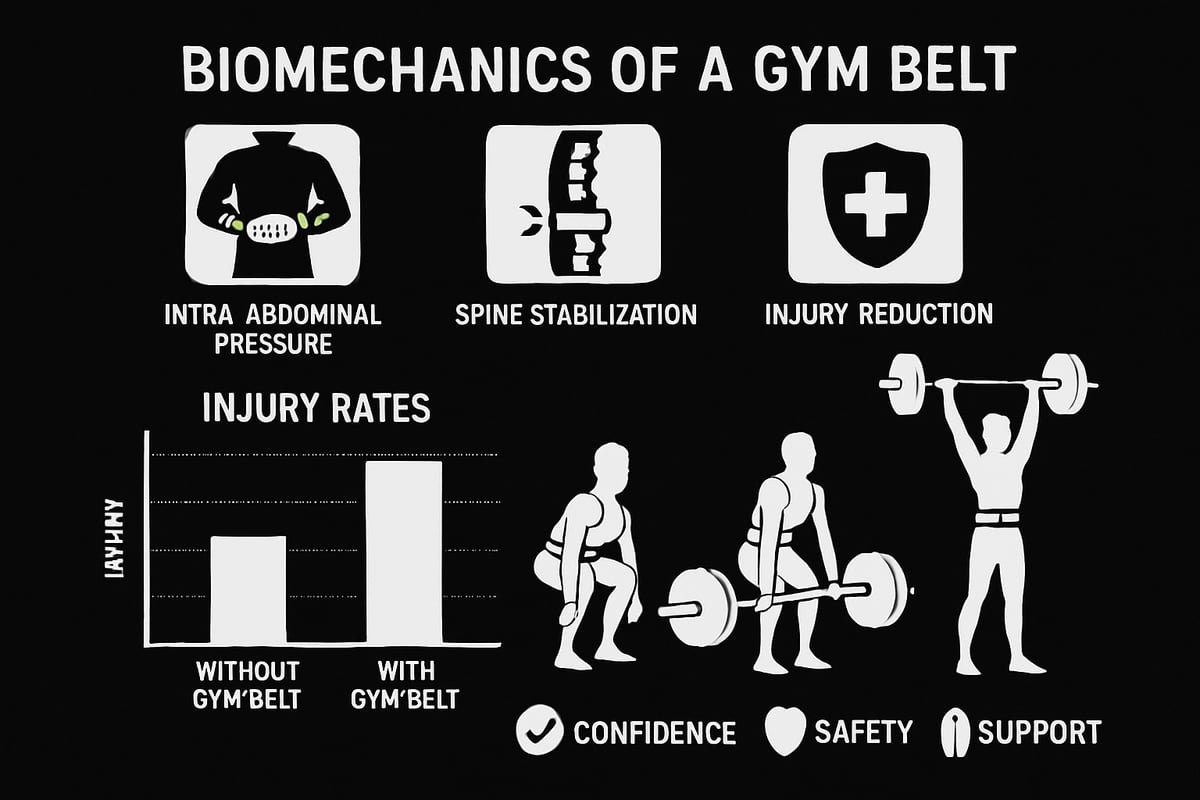
The Science Behind Gym Belts
A gym belt is designed to boost intra-abdominal pressure when you brace your core during heavy lifts. By increasing this pressure, the gym belt acts like a supportive wall for your spine, keeping it stable and aligned as you move serious weight.
This stabilization is crucial when performing big compound lifts. Research shows that using a gym belt can enhance lifting performance, sometimes increasing capacity by up to 15 percent for movements like squats and deadlifts. This extra support means you can safely push your limits without risking your back.
The main benefits of a gym belt include:
- Reduced injury risk: Lower back injuries are less common in lifters who use proper belt technique.
- Enhanced performance: Added stability often leads to improved strength output.
- Support for heavy lifts: Especially important for powerlifters and Olympic lifters.
However, a gym belt does not replace the need for strong core muscles. Some people believe wearing a gym belt will make their core weak, but studies suggest the opposite—lifters who balance belt use with core training actually see better results.
There’s also a psychological edge. Many athletes report feeling more confident when wearing a gym belt, which can help them focus and lift heavier.
Here’s a quick comparison:
| Benefit | With Gym Belt | Without Gym Belt |
|---|---|---|
| Injury Risk | Lower | Higher |
| Lifting Capacity | Up to +15% | Baseline |
| Psychological Support | Increased | Neutral |
Whether you’re a powerlifter chasing a new PR or a casual gymgoer seeking back protection, the gym belt serves as both a physical and mental safety net.
When Should You Use a Gym Belt?
Knowing when to wear a gym belt is just as important as knowing how it works. The gym belt is most effective during heavy, compound lifts—think squats, deadlifts, and overhead presses. These movements put the most strain on your lower back and core, making belt support invaluable.
If you compete in strongman events or Olympic lifting, a gym belt is almost always part of your gear for top sets. However, for warm-ups or lighter accessory work, it’s best to leave the gym belt off. This lets your core muscles do their job and develop strength naturally.
Trainers often recommend using the gym belt only for sets above 80 percent of your max effort. This approach balances safety and core development, helping you get stronger without becoming dependent on the belt.
For example, during a heavy deadlift session, you might use the gym belt for your final sets, but train beltless for lighter reps. This strategy builds core resilience while still protecting you when it counts. For those curious about the differences between belts and straps during deadlifts, you can check out this Deadlift Straps vs. Belts Explained guide.
Ultimately, the gym belt is a tool. Use it wisely, and it can elevate your training, safeguard your health, and boost your confidence with every lift.
Types of Gym Belts: Materials, Designs, and Innovations
Choosing the right gym belt in 2025 means understanding how materials, designs, and new technology impact your lifting experience. With so many options, getting familiar with what sets each type apart can help you pick a gym belt that fits your training needs and supports your goals.
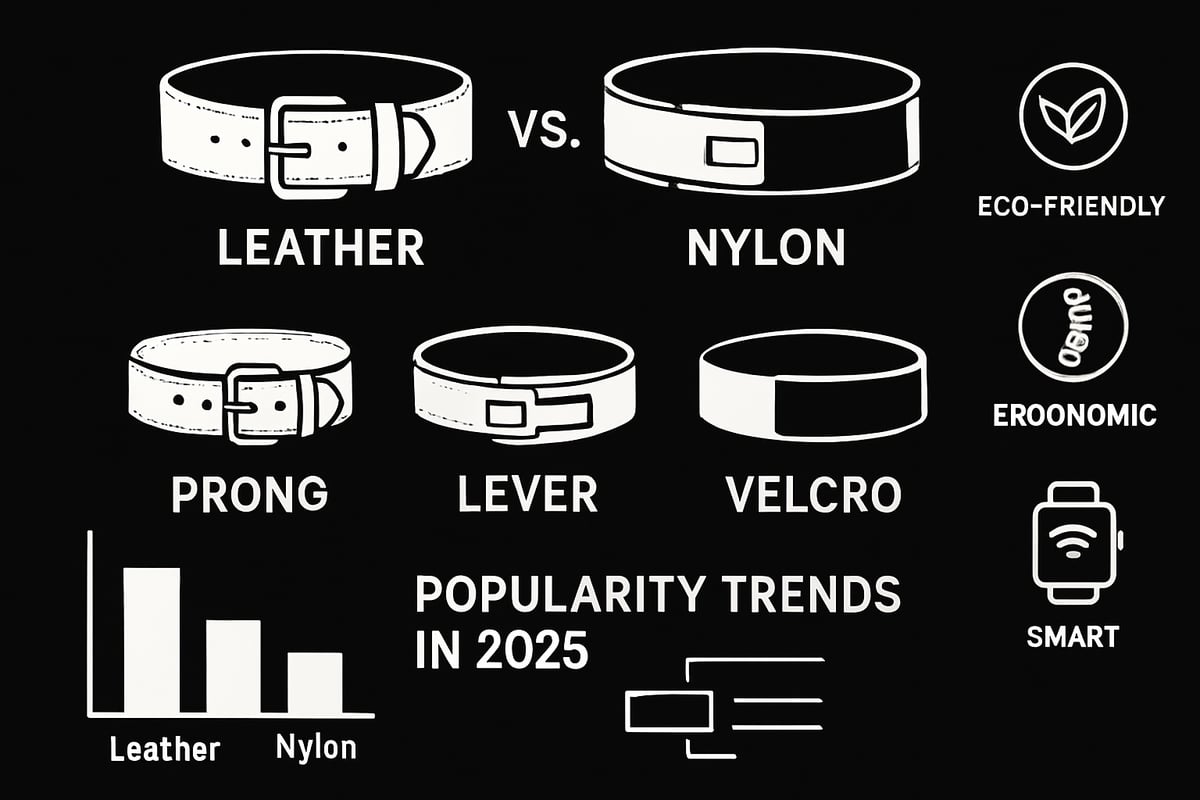
Leather vs. Nylon: Pros and Cons
The two main materials for a gym belt are leather and nylon. Each brings unique benefits and drawbacks to the table, depending on your training style.
| Feature | Leather Gym Belt | Nylon Gym Belt |
|---|---|---|
| Durability | High | Moderate |
| Flexibility | Low | High |
| Support Level | Maximum | Moderate |
| Weight | Heavy | Lightweight |
| Best For | Powerlifting, Max Lifts | CrossFit, Dynamic Moves |
| Cost | Higher | More Affordable |
| Maintenance | Needs Care | Easy to Clean |
A leather gym belt is favored for its rigidity and long lifespan, making it a top pick for powerlifters chasing PRs. The nylon gym belt is lighter and more flexible, ideal for athletes who need to move quickly or switch exercises often. When choosing between them, consider how much support you need and what feels most comfortable during your sessions.
Belt Designs: Prong, Lever, and Velcro
When it comes to fastening your gym belt, the design can make a big difference in security and convenience.
- Single Prong: Simple, reliable, and easy to adjust. Popular among lifters who want a straightforward fit.
- Double Prong: Offers extra security but can be harder to tighten, especially with thick belts.
- Lever: Allows for quick and consistent tightness. Great for those who want to get in and out of their gym belt fast.
- Velcro: Lightweight and adjustable, perfect for CrossFit or circuit training where speed and flexibility matter.
In 2025, lever and single prong designs remain favorites for heavy lifters, while Velcro styles are gaining traction in functional fitness circles. Choose the closure that aligns with how you train and how often you need to adjust your gym belt.
Thickness and Width: What Matters Most?
The thickness and width of your gym belt play a major role in both support and comfort. Most belts come in standard sizes: 4mm, 10mm, or 13mm thick, and about 4 inches wide.
- Thicker Belts (10mm, 13mm): Offer more stability for maximal lifts, but require a break-in period.
- Thinner Belts (4mm): More comfortable, better for general fitness or beginners.
- Width: 4-inch belts are standard and provide even support, but narrower belts may suit smaller frames or those needing more mobility.
Select a gym belt thickness and width based on your body type, lifting style, and how much support you want. A thicker belt is better for powerlifting, while a thinner, flexible option may suit CrossFit or high-rep training.
Latest Innovations in 2025
This year is seeing a wave of innovation in the gym belt world. Brands are rolling out ergonomic shapes that contour to your torso, boosting comfort without sacrificing support. Eco-friendly materials, like vegan leather and recycled nylon, are now mainstream, appealing to lifters who care about sustainability.
Hypoallergenic linings are also gaining popularity, helping prevent skin irritation during intense sessions. For tech enthusiasts, smart gym belts with built-in performance tracking are on the horizon, letting you monitor bracing and posture in real time.
For a deeper dive into current market trends and the latest advancements, check out the Gym Belts Market Dynamics report. Staying informed helps you choose a gym belt that keeps you ahead of the curve.
No matter your preference, investing in a gym belt designed for your needs and goals will keep you supported and ready for every lift.
How to Choose the Right Gym Belt for You
Choosing the best gym belt can feel overwhelming, especially with so many options in 2025. The right belt should match your training style, fit your body, and support your progress without getting in the way. Let’s break down what really matters so you can lift with confidence and comfort.
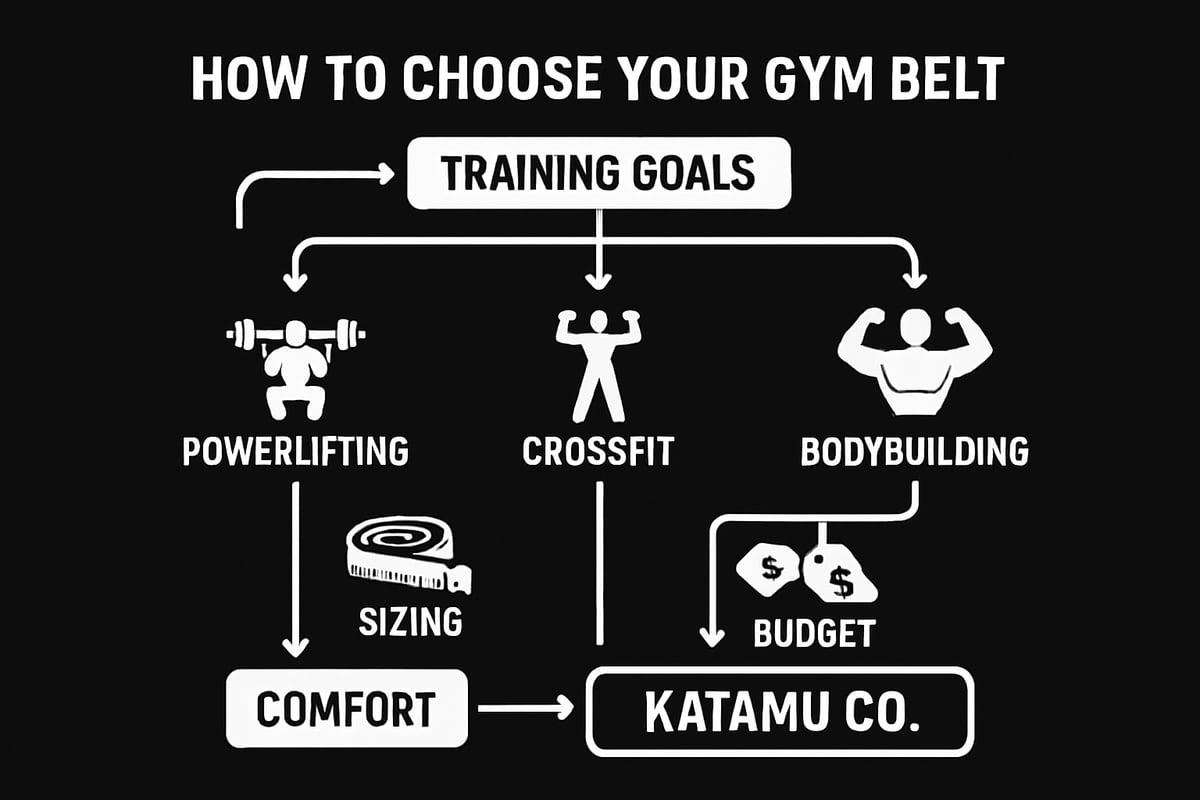
Assessing Your Training Goals and Needs
Before you pick a gym belt, think about your main training focus. Are you a powerlifter chasing new maxes, a CrossFit athlete needing flexibility, or someone who wants reliable support for general fitness? Your goals shape the kind of belt you’ll need most.
If you train heavy and prioritize max strength, a rigid leather gym belt offers the best support for squats and deadlifts. For CrossFit or mixed training, nylon belts provide more flexibility and comfort for dynamic moves. Bodybuilders and general gymgoers may prefer a balance of support and comfort.
Ask yourself:
- How often do you lift heavy?
- Which lifts do you want to improve?
- Do you compete, or is safety your top concern?
Matching your gym belt to your discipline keeps you safer, boosts performance, and makes every rep count.
Sizing and Fit: Avoiding Common Mistakes
Getting the right fit is just as important as picking the right type of gym belt. Measure your waist where you’ll wear the belt, not your pants size. Consider torso length and how the belt sits during your main lifts.
A poor fit means less support and more discomfort. Too loose, and the belt won’t help; too tight, and it might restrict breathing or cause bruising. Always try a belt before buying if possible, or double-check sizing charts.
Here’s a quick sizing checklist:
- Measure around your navel, not your hips.
- Check for adjustable holes or Velcro for fine-tuning.
- Try different thicknesses and widths for comfort.
For a detailed walkthrough, see this helpful Weightlifting Belt Sizing Guide to avoid the most common mistakes.
Comfort and Adjustability
Comfort is key for a gym belt you’ll actually use. Leather belts often need a break-in period, but the long-term support is worth it for many lifters. Padding, contouring, and the placement of the buckle all play a part in how the belt feels during tough sets.
Look for these comfort features:
- Soft edges to prevent digging into your sides.
- Contoured shapes for a natural fit.
- Adjustable buckles or Velcro for quick changes.
User reviews often mention the difference a well-padded or contoured gym belt makes, especially during longer sessions. Try different styles to see what feels best for your body and training style.
Budget and Value Considerations
A quality gym belt is an investment, not just a purchase. Entry-level belts start around $30–$50, while premium leather or lever belts can reach $150 or more. Think about durability, warranty, and how often you’ll use it.
| Belt Type | Price Range | Durability | Best For |
|---|---|---|---|
| Nylon | $30–$60 | Medium | CrossFit, Fitness |
| Leather Prong | $60–$120 | High | Powerlifting |
| Lever (Leather) | $100–$150+ | Very High | Heavy Lifters |
Check for warranties and money-back guarantees. If you train several times a week, investing in a higher-end gym belt often pays off in comfort and longevity.
Katamu Co: Premium Lifting Gear for Everyday Lifters
When it comes to blending style, support, and value, Katamu Co stands out in 2025. Their premium lever belts and lifting accessories are built from top-quality materials with unique designs that appeal to both beginners and seasoned lifters.
Katamu’s product range includes lever belts, knee sleeves, wrist wraps, and shorts. Every gym belt comes with a 1-year warranty, a 30-day money-back guarantee, and free wrist wraps with each belt order. USA orders over $75 also enjoy free shipping.
Trusted by over 50,000 lifters, Katamu Co focuses on long-term durability and everyday usability. Whether you’re aiming for your first squat PR or want reliable support for every session, a Katamu gym belt offers lasting value and peace of mind.
Proper Usage: Wearing Your Gym Belt for Maximum Support
Maximizing the benefits of your gym belt means more than just strapping it on and hoping for the best. Proper usage can make the difference between safe, powerful lifts and wasted effort or injury. Let’s break down how to get the most out of your gym belt in every session.
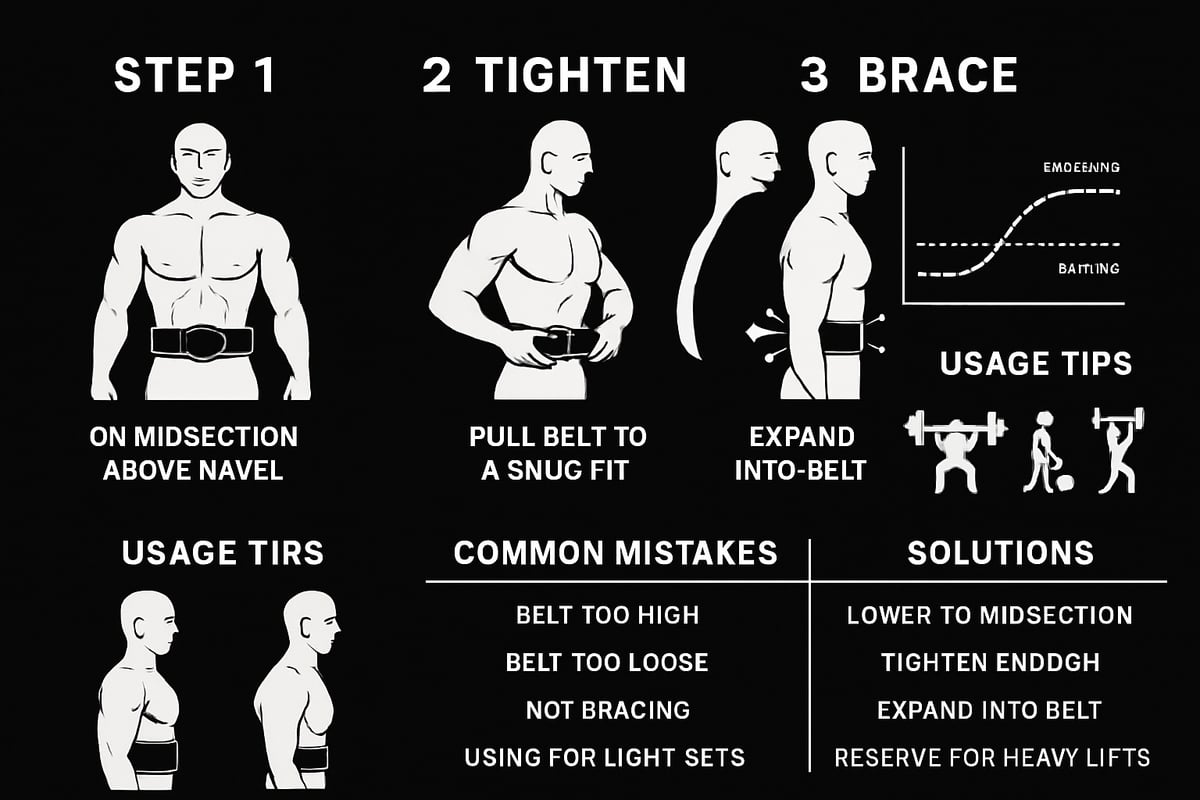
Step-by-Step Guide to Belt Placement and Tightening
Getting the right fit with your gym belt is crucial for support and safety. Start by wrapping the belt around your midsection, positioning it just above your hips and below your ribs. The belt should feel snug but not restrictive, allowing you to take a deep breath and brace your core.
Follow these steps for optimal placement:
- Place the gym belt parallel to the ground, avoiding angling it too high or low
- Tighten the belt so it compresses gently without pinching or restricting breathing
- Perform a quick check: inhale deeply, brace your abs, and ensure the belt supports your core without digging in
For more details on exact fitting and what closure system might work best for you, check out Choosing the Right Lifting Belt.
When and How to Use the Belt During Workouts
A gym belt is designed to boost your performance during the heaviest, most demanding lifts. Use your belt for top sets of squats, deadlifts, or overhead presses, especially when lifting near your max. Avoid wearing the gym belt for warm-ups or light accessory work, as this can hinder natural core activation.
Timing matters. Put the gym belt on just before your working sets and remove it between sets to encourage raw core strength. Experienced lifters often use the belt in a strategic way, focusing on quality over quantity of use. This approach helps you build both strength and resilience for long-term progress.
Breathing and Bracing Techniques
A gym belt works best when paired with proper breathing and bracing. Before you lift, take a deep breath into your belly, not your chest, and push your core out against the belt. This increases intra-abdominal pressure, stabilizing your spine and protecting your lower back.
Practice these drills:
- Stand tall and inhale through your nose, filling your abdomen
- Brace your core as if preparing for a punch
- Press out gently against the gym belt with your abs, not by sucking in
Use the belt as a cue, not a crutch. Good bracing habits make every lift safer and more powerful.
Common Mistakes and How to Avoid Them
Many lifters misuse their gym belt, reducing its effectiveness. Watch for these common errors:
- Over-tightening, which restricts breathing and movement
- Wearing the belt for the entire workout, leading to weak core muscles
- Placing the gym belt too high or too low, missing the optimal support zone
- Ignoring discomfort or pinching, which signals a poor fit
To avoid these mistakes, always check your belt position and tightness before each heavy set. Listen to your body for any signs of irritation or slippage.
| Mistake | How to Fix |
|---|---|
| Over-tightening | Loosen until you can breathe |
| Under-tightening | Tighten for firm core support |
| Wrong placement | Adjust above hips, below ribs |
| Wearing too long | Use only for max effort sets |
Adapting Belt Use for Different Exercises
Different lifts require slight adjustments in your gym belt technique. For squats, position the belt evenly around your waist. In deadlifts, you might shift it slightly higher for more back support. For overhead presses, ensure the gym belt does not impede arm movement.
Experiment with belt height and tightness based on your anatomy and comfort. Olympic lifts often need a looser fit for dynamic movement, while powerlifting benefits from a tighter, more rigid setup. Always prioritize form and function over habit.
By mastering the art of gym belt usage, you’ll unlock safer, more effective training sessions, no matter your lifting style.
Maintenance and Longevity: Caring for Your Gym Belt
Keeping your gym belt in top shape is crucial for both safety and performance. A well-maintained gym belt supports your lifts and provides confidence, while a neglected one can quickly become a weak link. Let’s break down everything you need to know to extend the life of your favorite lifting accessory.
Cleaning and Storage Best Practices
Regular cleaning keeps your gym belt free from sweat, odor, and bacteria. For leather belts, use a damp cloth with mild soap, wipe gently, then air dry away from direct heat. Avoid soaking or harsh chemicals, as they can dry out and crack the leather.
Nylon belts are more forgiving. Hand wash them with mild detergent, rinse thoroughly, and air dry. Never use a tumble dryer for any gym belt. Always store your belt flat or rolled loosely in a cool, dry area, not crammed in a gym bag or left in direct sunlight.
| Material | Cleaning Method | Drying | Storage |
|---|---|---|---|
| Leather | Mild soap, damp rag | Air dry | Flat/loose roll |
| Nylon | Hand wash, detergent | Air dry | Flat/loose roll |
Inspecting for Wear and Tear
Before every session, give your gym belt a quick check. Look for:
- Fraying edges or loose stitching
- Cracks, stretching, or soft spots in the leather
- Warped, bent, or broken buckles and hardware
- Velcro that no longer sticks securely
A damaged gym belt can compromise your safety. If you notice any of these signs, it’s time to repair or replace your belt. Don’t risk your back or your progress—routine inspections are a must for every lifter.
Extending Belt Life
Want your gym belt to last for years? Rotate between two belts if you train frequently to reduce wear. Use a protective gear bag to transport your belt and shield it from sweat, moisture, and rough surfaces.
Most reputable brands offer warranties and repair services, so keep your purchase information handy. Investing in a high-quality gym belt with good support can save you money long-term, as cheaper belts often wear out faster and need replacement sooner.
- Rotate belts for heavy training cycles
- Store in gear bags between sessions
- Register for warranties and repairs
Environmental Considerations
Sustainability is reshaping the gym belt market in 2025. Many brands are now using recycled materials, plant-based leathers, and hypoallergenic options. When your gym belt reaches the end of its life, look for recycling programs or eco-friendly disposal options.
Some companies even offer trade-in or take-back initiatives for old belts. Want to learn more about how fitness gear is getting greener? Explore the Future of Workout Equipment Innovations 2025 for a look at the latest trends in sustainability and smart design for gym belts.
Expert Tips and Advanced Strategies for Belt Users
Unlocking the full potential of your gym belt goes beyond strapping it on before a heavy lift. Mastery comes from understanding how to progress safely, tailoring belt use to your needs, learning from the pros, staying ahead of trends, and troubleshooting common issues. This section breaks down advanced strategies to help you get the most out of your gym belt at every stage of your lifting journey.
Progressing Safely with a Belt
For optimal results, introduce your gym belt gradually into your training. Start by using it only for your heaviest working sets, such as maximal squats or deadlifts. This approach helps you maintain raw core strength, preventing over-reliance on external support.
Periodization is key. Cycle between phases where you focus on beltless training and periods where you ramp up gym belt usage for top-end lifts. This strategy not only boosts core development but also conditions your body to handle heavier loads safely.
Building up to regular gym belt use should always be paired with proper bracing and breathing techniques. By doing so, you protect your spine and maximize your performance gains. Remember, a gym belt is a tool to enhance—not replace—your lifting fundamentals.
Customizing Belt Use for Your Body and Goals
No two lifters are exactly alike, so customizing gym belt use is essential. For those with shorter torsos, a thinner or contoured belt can minimize pinching and improve comfort. Women may prefer belts designed with narrower widths or softer materials for a better anatomical fit.
Youth and older adults should focus on proper belt sizing and not rush into heavy use. Start with lighter loads and ensure the gym belt provides support without restricting movement. If using a belt for injury prevention or rehab, consult with a healthcare professional or experienced coach to tailor your approach.
Adjusting tightness, belt height, and even closure type can make a big difference. Always listen to your body—comfort and stability are non-negotiable when it comes to gym belt safety and effectiveness.
Insights from Coaches and Athletes
Elite lifters and seasoned coaches agree: the gym belt is most effective when used strategically. Powerlifter Jane Doe notes, "I only use my gym belt for attempts above 85% of my max, so I keep my core strong for lighter work." Olympic coach Mike Lee emphasizes teaching proper bracing alongside belt use to avoid bad habits.
Real-world examples show that gym belt use in competition often differs from training. Athletes may reserve the belt for final attempts, relying on raw strength during build-up sets. Data from lifting federations reveal that lifters using a gym belt for heavy sets consistently report fewer lower back injuries.
The consensus is clear: combine gym belt use with strong technique and core exercises for best results. Listen to experienced voices in the community to refine your approach.
Staying Updated with 2025 Trends
The gym belt landscape is rapidly evolving, with new technologies and materials emerging each year. Smart belts with integrated sensors, eco-friendly materials, and ergonomic shapes are shaping the future. To stay ahead, follow reputable sources and online communities dedicated to lifting gear.
For a deeper look at the latest innovations, explore Emerging Gym Equipment Trends 2025 for insights on smart and sustainable gym belt options. Another valuable resource is Innovations in Fitness Equipment 2025, which covers adaptive features and product developments.
Stay critical—differentiate between marketing hype and true innovation. Engage in forums, read product reviews, and connect with other gym belt users to make informed decisions in 2025 and beyond.
Troubleshooting Problems and FAQs
Common gym belt problems include discomfort, slippage, and sizing issues. If your gym belt feels too tight or restricts breathing, loosen it slightly and check placement. Slippage can often be solved by adjusting tightness or switching to a different closure system.
For persistent issues, consult a certified coach or lifting specialist for a professional fitting. Regularly inspect your gym belt for wear and tear, especially before heavy sessions. If you experience ongoing discomfort, it may be time to try a different style or size.
Resources such as manufacturer guides, community forums, and expert videos can help answer specific questions. Prioritize safety and comfort, and never hesitate to seek help to get the most from your gym belt.
Now that you know what to look for in a gym belt and how the right support can make all the difference in your training, why not take the next step toward safer, stronger lifts? At Katamu, we’ve got your back—literally—with premium lever belts and accessories built for everyday lifters like you. Our gear is designed to last, combining style with serious support, so you can focus on progress without worrying about your equipment. If you’re ready to feel the difference in your workouts, Level up your lifts and see what quality feels like.
